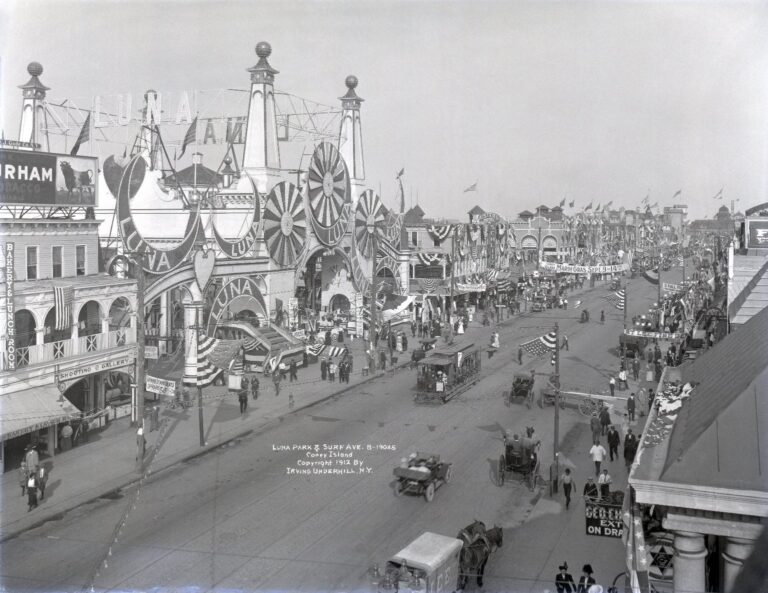Like the so-called founding of the United States in 1776, the definition of America has always been problematic, fraught with a deep-rooted history of colonization, imperialism, and capitalism. Essentially, the idea that certain art forms and ephemeral cultures are thought to represent a singular American identity while others do not often erases the diversity of intersectional experiences and perspectives that actually make up this country. transformation.
These national heritage issues resurface every July 4th, as communities across the country commemorate America’s independence from Britain with star-studded celebrations including parades, fireworks and barbecues. During this holiday season, we’ve rounded up some of the objects and artifacts from museum collections that capture the quintessentially American spirit, regardless of national allegiance and pride—and its many nuances and complexities.
Read on to learn about the core American artifacts we’re focusing on this holiday season.
O’Betty’s hot dogs have a long history

For those of you who will be spending your fourth holiday at the barbecue joint, you may be happy to know that there is a restaurant and museum in Athens, Ohio dedicated to all things Wiener coding. The Oberti Hot Dog Museum, part of the restaurant’s dining area, houses hundreds of hot dog memorabilia, including clothing, books, toys, musical instruments and “dangerous-looking hot dog cookers.” Frankfurters named after burlesque entertainers such as Gypsy Rose Lee, Syra Marty and Mata Hari.
Iconic photo of a white picket fence by Paul Strand

Published in the June 1917 issue photography work Paul Strand’s “White Fence” (1916), along with an essay about photography, became an iconic image in the form of a direct shot of a white picket fence in Port Kent, New York— Both the composition and its composition are radically different from the dominant Pictorialist tradition. Today, the photo is housed at the Getty Museum in Los Angeles, along with more than 180 of Strand’s photographs documenting communities across the country.
Declaration of Independence

What could be more American than the literal Declaration of Independence? While the original document formally condemning the reign of King George III is stored with the Constitution and Bill of Rights at the National Archives Museum in Washington, D.C., publisher and bookseller John Dunlap printed it that night The first slamming articles on the legendary docs. The last 26 surviving copies are scattered among institutions such as the Library of Congress, the New York Public Library, and the Houghton Library of Harvard University.
Dallas Cowboys Cheerleaders’ White Boots and Jackie Robinson’s Brooklyn Dodgers Uniform

if you have been watching american sweetheart On Netflix, you know that the Dallas Cowboys Cheerleaders (DCC) are talented but severely underpaid, while male football players are paid millions of dollars. DCC performers are best known for their signature white cowboy boots, a pair of which is on display at the Smithsonian’s National Museum of American History along with uniforms and other memorabilia that tell the story of cheerleading’s imprint on American history and identity.
A New York City institution talks about another of America’s most beloved sports, celebrating the life of groundbreaking baseball player and civil rights activist Jackie Robinson. At the Jackie Robinson Museum in Manhattan, visitors can find historical memorabilia from the Brooklyn Dodgers’ career, including Robinson’s uniform and bat from 1947, his first season with the team.
Kinmen Fortune Cookie Factory
Possibly originated from Japan Tsujiura Senbei (meaning “money cookies”), this classic American treat was invented in San Francisco sometime around the turn of the 20th century, when Japanese immigrants arrived in the United States after the Chinese Exclusion Act deported Chinese laborers. Today, the history of the prophetic cookie continues to be celebrated at the family-owned Golden Gate Fortune Cookie Factory, which owner Kevin Chan describes as “a mini museum and an institution, not just a store.” “. Founded in 1962 by Chan’s mother and uncle, this long-established business in San Francisco allows visitors to glimpse the old-fashioned way of making these classic desserts using antique machines and learn about the hand-assembly process.
coney island in movies

Savor decades of Coney Island history at the Brooklyn Museum, where more than 200 archival photos capture the story of the New York seaside resort and its generations of community members, documenting all its storied history from the boardwalk to the beach. Glory and absurdity. A microcosm that retains its essence through the bonds of emotion and friendship.
Vintage Heinz ketchup bottle

The origins of ketchup can be traced back 500 years to southern China, but American manufacturers such as Heinz made the ketchup a beloved dinner and fast-food staple among Americans in the late 19th century. ketchup Pittsburgh’s Heinz History Center displays hundreds of condiment-related artifacts, including an 11-foot ketchup bottle made from more than 400 individual containers and more.
For those who love mustard (yes, you can have both), the National Mustard Museum of Wisconsin offers free admission to visitors to explore more than 6,000 jars of this tangy condiment from All 50 states and more than 70 countries. The museum also hosts the annual Global Mustard Competition and the National Mustard Day Festival.
Your dream jeans

While it may come as a surprise that denim was invented in Nimes, France, blue jeans are an American invention, patented in 1873 by Levi Strauss & Co. founders Levi Strauss and Jacob David. With its own history intertwined with racism as its own, despite anti-Chinese labor policies in the 1880s, blue jeans have transcended the brand themselves to become one of the most beloved pants in America and around the world today. Denim die-hards can find this pair decorated with red, blue and silver ties at the Costume Institute of the Metropolitan Museum of Art in New York.

